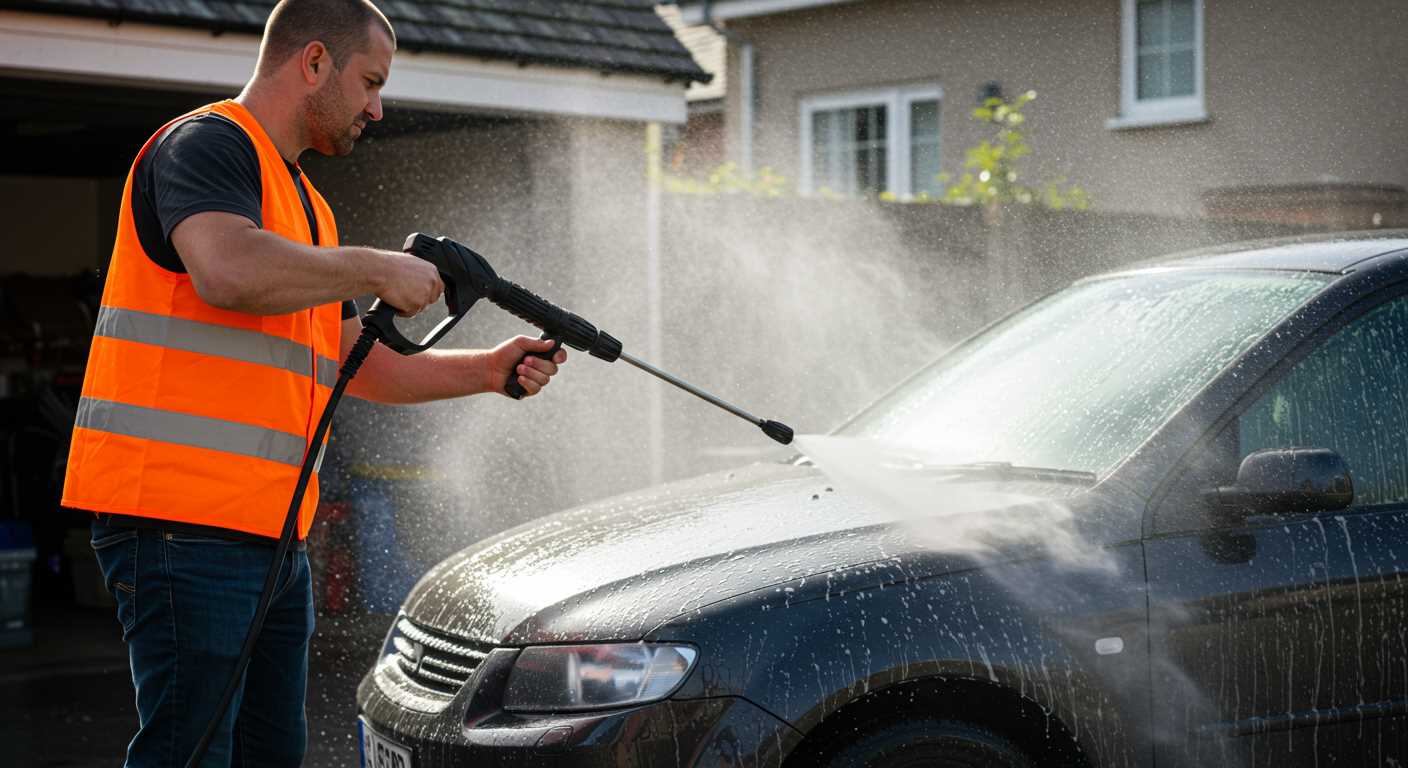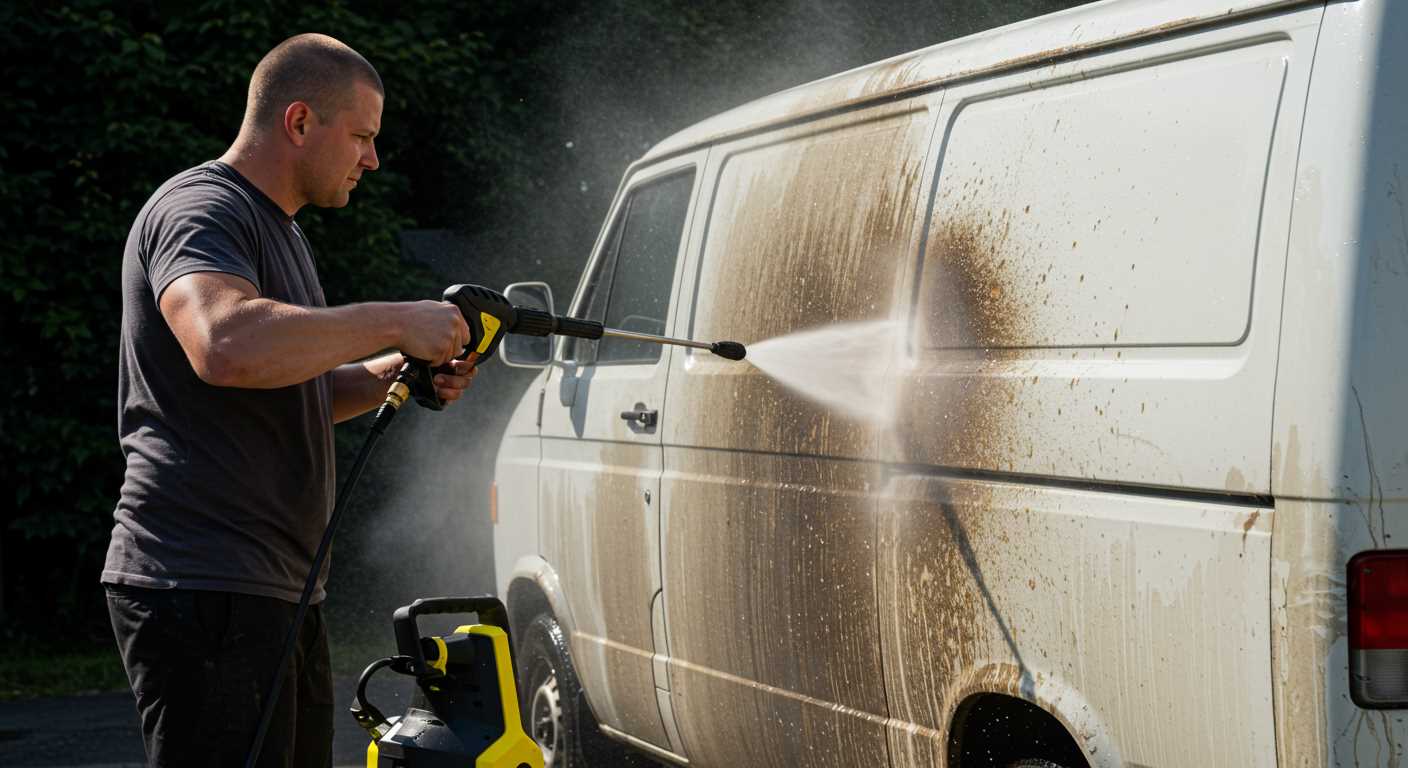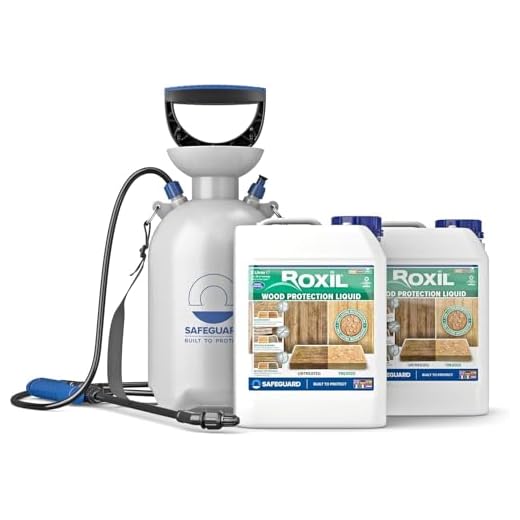



Cleaning teak with a pressure washer is effective and efficient because it allows you to remove dirt, grime, and other debris from the surface of the teak quickly and easily. A pressure washer uses high-pressure water to blast away dirt and grime, which can be difficult to remove by hand. This method can save you time and effort compared to scrubbing the teak with a brush or using other cleaning methods.
In addition, pressure washing can help to clean areas that are hard to reach or that are heavily soiled, such as between deck boards or in the grooves of teak furniture. The force of the water can penetrate deep into the wood to remove dirt and other contaminants, leaving the teak looking clean and refreshed.
However, it is important to use the pressure washer correctly to avoid damaging the teak wood. Using a pressure washer at high pressure or holding the nozzle too close to the wood can cause damage to the surface of the teak. Therefore, it’s essential to use the right pressure and spray pattern, as well as follow the appropriate cleaning steps, to ensure that your teak is properly cleaned without causing any damage.
Preparing the Pressure Washer
Properly setting up and adjusting the pressure washer is important to ensure that you can clean the teak effectively without causing any damage. Here are the steps to follow:
- Choose the right pressure washer: Choose a pressure washer with a suitable PSI (pounds per square inch) for teak cleaning. For most teak cleaning purposes, a pressure washer with a PSI between 1,500 and 2,000 should suffice. Avoid using a pressure washer with too high of a PSI, as it can damage the wood.
- Choose the right nozzle: Choose a nozzle that has a wide spray pattern. This will help to avoid damaging the wood with too much concentrated pressure.
- Adjust the pressure: Adjust the pressure according to the manufacturer’s instructions. Start with the lowest pressure setting and gradually increase it as needed. Avoid using high pressure as it can cause damage to the teak.
- Connect the water source: Connect the pressure washer to a clean water source with adequate water flow. Avoid using a dirty or contaminated water source as it can leave stains on the teak.
- Turn on the pressure washer: Turn on the pressure washer and let it run for a few seconds to make sure it’s working properly.
By following these steps, you can properly set up and adjust the pressure washer for cleaning teak without causing any damage to the wood.
Rinsing the Teak
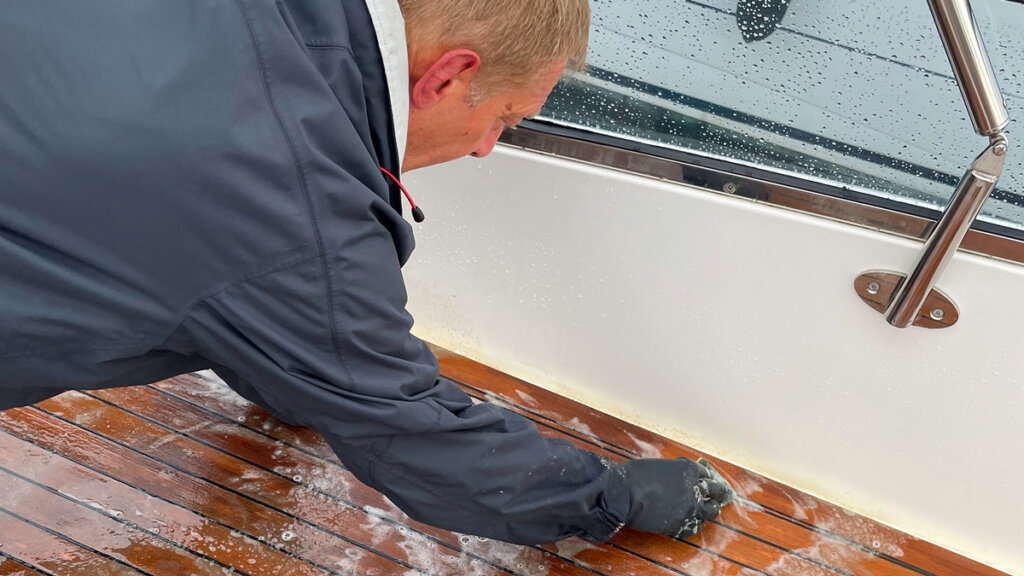
Rinsing the teak surface before using the pressure washer is important for several reasons. Here are some of the main reasons why:
- Removes loose dirt and debris: Rinsing the teak surface with water before pressure washing helps to remove any loose dirt, debris, or leaves that may be sitting on the surface. This can help to prevent any clogs in the pressure washer, which can affect its performance.
- Prepares the surface for cleaning: Rinsing the teak surface with water helps to wet it down, which makes it easier for the teak cleaner to penetrate and work effectively. This can help to loosen dirt and grime and make it easier to remove with the pressure washer.
- Helps to prevent damage: Rinsing the teak surface with water before pressure washing can help to prevent damage to the wood. If the surface is dry and covered in dirt, the pressure washer can cause the dirt to scratch and damage the wood. Wetting down the surface helps to prevent this from happening.
Overall, rinsing the teak surface with water before pressure washing is an important step that can help to prepare the surface for cleaning and prevent any damage to the wood. Make sure to use a gentle spray pattern when rinsing the teak, and avoid using high pressure that can cause damage to the wood.
Applying Teak Cleaner
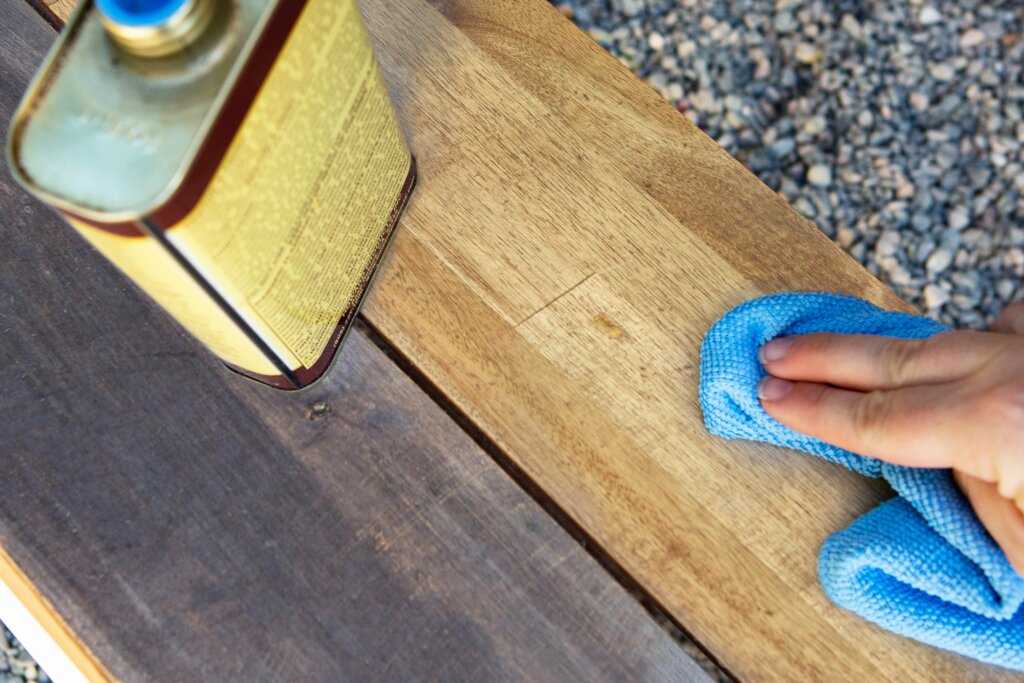
Using a teak cleaner is important for several reasons. Here are some of the main reasons why:
- Helps to remove dirt and grime: Teak cleaners are specially designed to help remove dirt, grime, and stains from teak surfaces. They contain powerful cleaning agents that penetrate the wood and loosen dirt and grime, making it easier to remove.
- Restores the natural color: Over time, teak wood can become dull and discolored due to exposure to the elements. Teak cleaners can help to restore the natural color of the wood, making it look like new again.
- Prepares the surface for sealing or oiling: If you plan to seal or oil the teak surface after cleaning, using a teak cleaner is essential. It helps to remove any dirt or grime that could interfere with the sealing or oiling process, ensuring that the sealer or oil can penetrate the wood effectively.
- Protects the wood: Teak cleaners also contain ingredients that help to protect the wood from future damage, such as UV rays and moisture. This can help to extend the life of your teak furniture and keep it looking beautiful for longer.
Overall, using a teak cleaner is important for maintaining the appearance and integrity of your teak furniture. It helps to remove dirt and stains, restore the natural color, and protect the wood from future damage. When choosing a teak cleaner, make sure to select one that is safe for use on teak and follow the manufacturer’s instructions for best results.
Pressure Washing the Teak
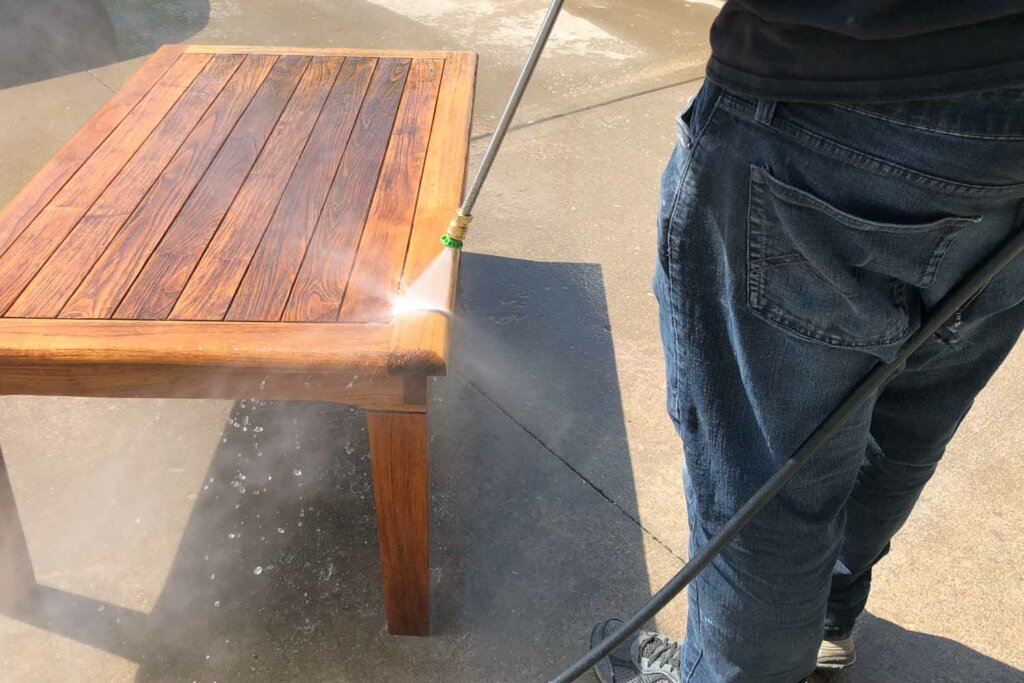
Pressure washing can be an effective way to clean teak, but it’s important to take precautions to avoid damaging the wood. Here are some tips to help you avoid damaging the wood while pressure washing:
- Choose the right pressure: When using a pressure washer to clean teak, it’s important to choose the right pressure setting. Too much pressure can damage the wood, while too little pressure may not be effective. Start with a low pressure setting and increase the pressure gradually as needed.
- Use the right nozzle: The nozzle you use can also affect the pressure and force of the water. Choose a wide-angle nozzle rather than a pinpoint nozzle, as this will distribute the water more evenly and reduce the risk of damaging the wood.
- Maintain a safe distance: Hold the pressure washer nozzle at a safe distance from the teak surface, typically around 12 inches. This will help to prevent the water from penetrating the wood and causing damage.
- Work in small sections: Instead of trying to pressure wash the entire teak surface at once, work in small sections. This will help you to focus on one area at a time and ensure that the entire surface is cleaned evenly.
- Avoid pressure washing across the grain: Pressure washing across the grain of the wood can cause damage. Instead, work with the grain of the wood to clean it properly.
- Protect surrounding areas: Use plastic sheeting or other protective materials to cover surrounding areas and protect them from water damage.
By following these tips, you can avoid damaging the wood while pressure washing and effectively clean your teak surface.
Rinsing the Teak Again
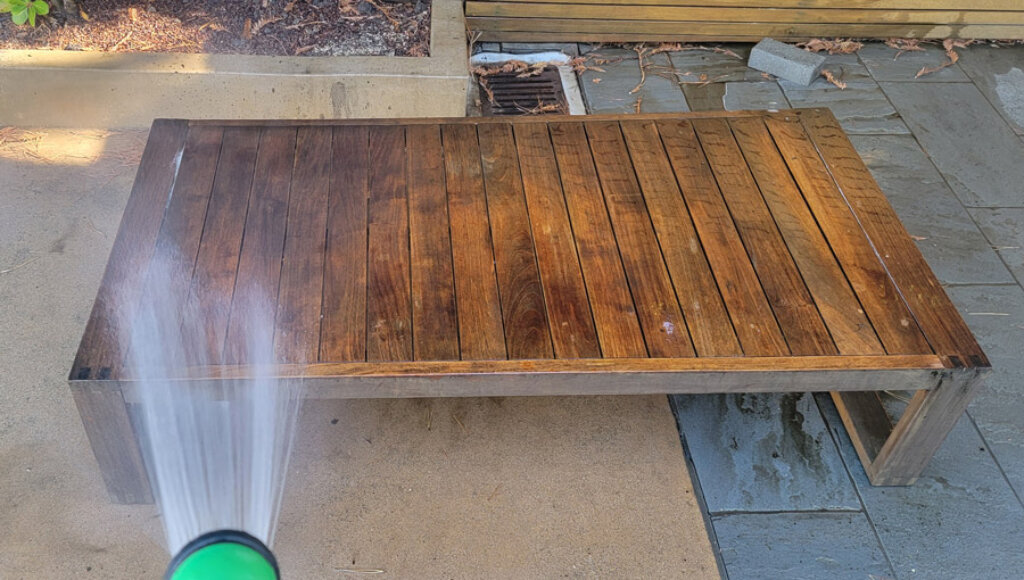
Rinsing the teak after pressure washing is important for several reasons:
- Remove residue: Pressure washing can remove dirt, grime, and other buildup from the teak surface, but it can also leave behind residue from the cleaning process. Rinsing the teak thoroughly helps to remove any residue left behind by the pressure washing.
- Prevent damage: Leaving residue on the teak surface can cause damage over time. Residue can trap moisture against the wood, leading to mold and mildew growth. Rinsing the teak surface helps to prevent damage from residue buildup.
- Prepare for finishing: If you plan to apply a sealer or other finish to the teak surface, rinsing it after pressure washing is important. The residue left behind by pressure washing can interfere with the adhesion of the finish, leading to an uneven or incomplete finish.
Overall, rinsing the teak after pressure washing is an important step in the cleaning process. It helps to remove residue, prevent damage, and prepare the teak surface for finishing. Make sure to rinse the teak thoroughly with clean water to ensure that all residue is removed.
Letting the Teak Dry
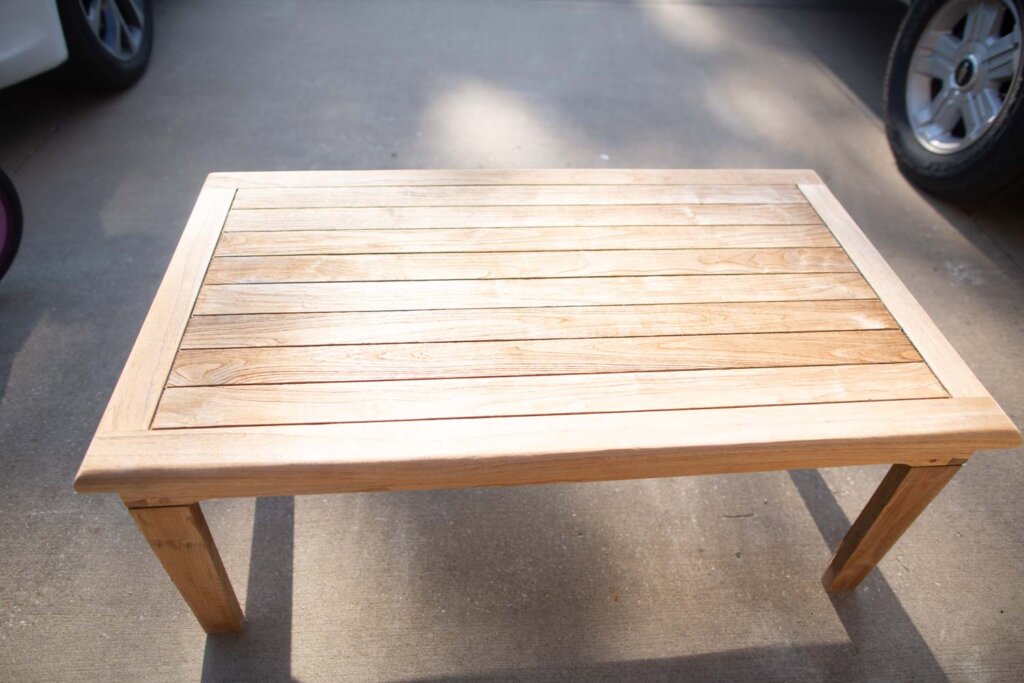
Allowing the teak to dry properly after cleaning is an important step in the cleaning process. Here are a few reasons why it’s important to let the teak dry properly:
- Prevent water damage: Teak is a hardwood that is naturally resistant to water, but it can still be damaged if it is exposed to water for too long. Allowing the teak to dry properly after cleaning helps to prevent water damage by ensuring that any remaining moisture evaporates quickly.
- Prepare for finishing: If you plan to apply a sealer or other finish to the teak surface, it’s important to let it dry completely first. Moisture can interfere with the adhesion of the finish, leading to an uneven or incomplete finish.
- Avoid mold and mildew growth: If the teak is not allowed to dry properly, moisture can become trapped between the wood fibers, creating the ideal environment for mold and mildew growth. This can lead to unsightly black or green stains on the teak surface.
- Extend the life of the teak: Teak is a durable wood that can last for many years, but it requires proper care to stay in good condition. Allowing the teak to dry properly after cleaning helps to extend its lifespan by preventing water damage and mold and mildew growth.
Overall, allowing the teak to dry properly after cleaning is an important step in the care and maintenance of your teak surface. Make sure to give it enough time to dry completely before moving on to the next step of the cleaning process.
By following these instructions, you can ensure that your teak surface is completely dry before use, helping to prevent water damage and other issues.
Conclusion
In conclusion, cleaning teak with a pressure washer is an effective and efficient way to maintain the beauty and longevity of teak surfaces. By properly setting up and adjusting the pressure washer, rinsing the teak surface, using a teak cleaner, and using the pressure washer correctly, you can remove dirt, grime, and other stains from teak surfaces. It’s important to rinse and dry the teak properly after cleaning to prevent water damage and other issues. By following these steps, you can ensure that your teak surfaces remain in excellent condition for years to come.




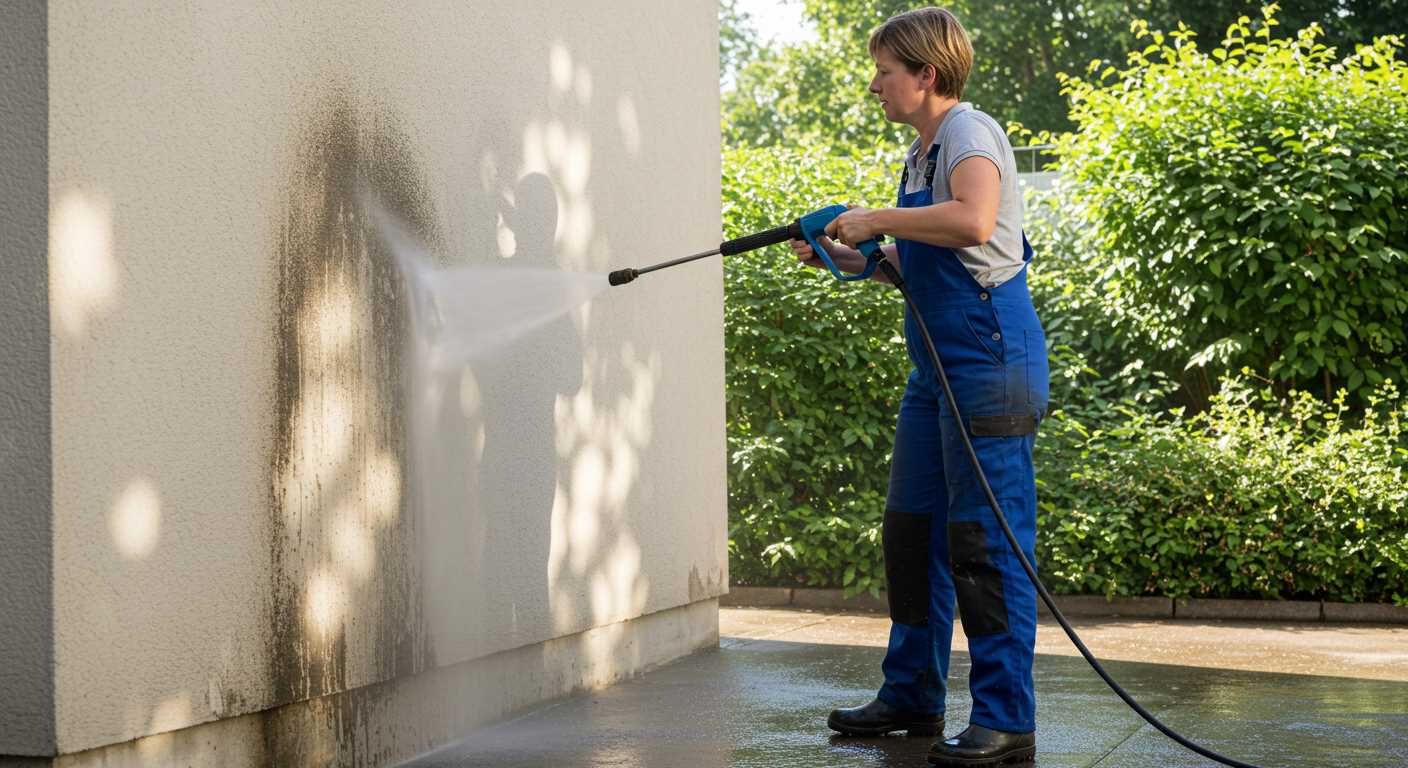
.jpg)
